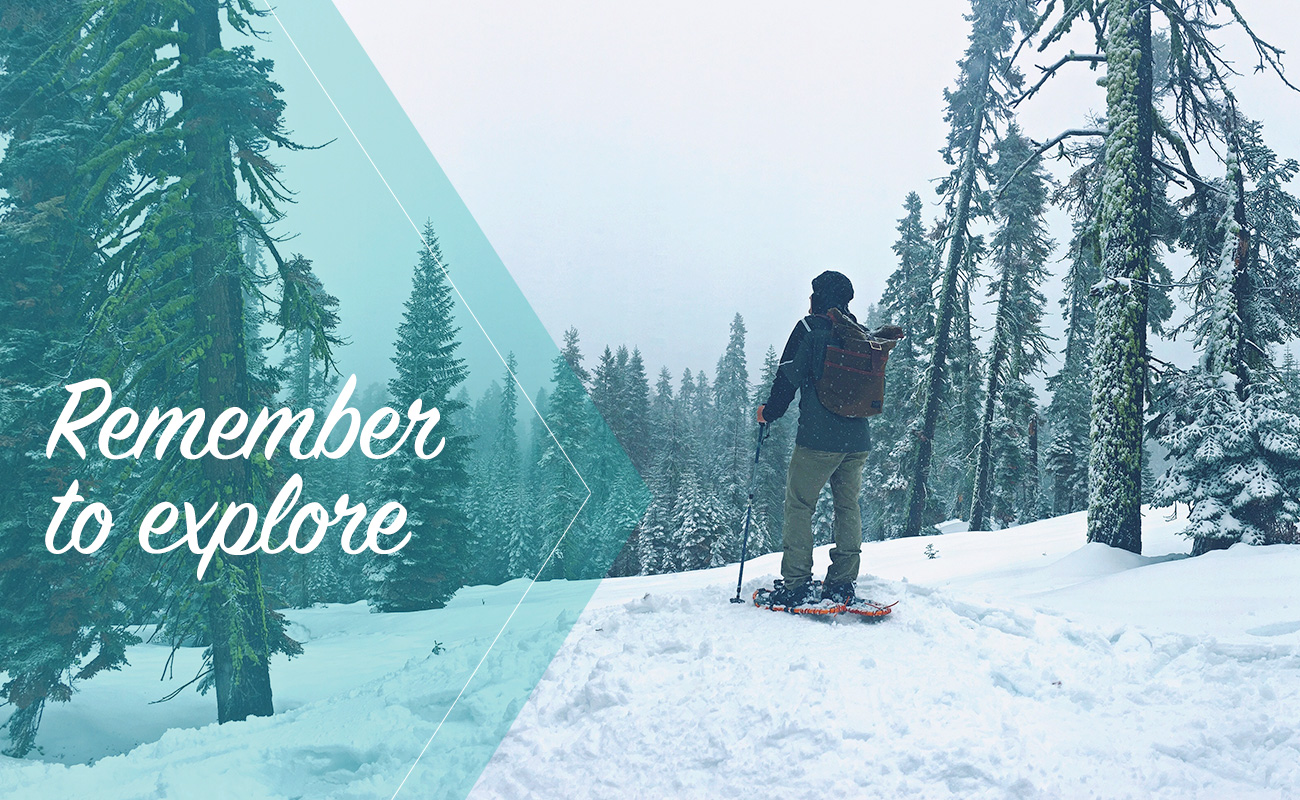February 26, 2018
Healthy Living 
Strap on Your (Snow) Shoes for a Winter Adventure

When you think “winter activities,” skiing, skating, and sledding may come to mind right away. Add another “S” to that list: snowshoeing!
It’s as easy as walking in sand, but you still need to be prepared with the right clothing, attitude, and equipment for the conditions and your skills. Here are a few things to remember.
Wear clothes that keep you warm and dry.
- Waterproof hiking or snow boots with wool socks and synthetic sock liners
- Synthetic, wicking long underwear and a synthetic fleece top to wick away moisture
- Waterproof athletic pants and jacket to protect you from wind and kicked-up snow
- Hat or ear-covering headband and water-resistant ski gloves with liners
- Sunglasses and sunscreen to protect your eyes and skin from reflected light
- What not to wear: cotton. Avoid jeans, t-shirts, typical athletic socks, and sweatshirts. When cotton clothing gets wet, you lose body heat and may develop hypothermia.
Use proper technique and the right gear to prevent injuries.
- Start with snowshoes for flat land. If you’re more experienced, you might upgrade to a pair designed for rolling or mountainous terrain.
- You don’t need poles at first. Find your center of gravity and get your feet under you. You’ll need to adjust to a wider stance and remember to shift your body weight forward. As you gain experience and try more challenging trails, you may find poles helpful.
- Remember that the crampons (claws) are under the balls of your feet. Gently kicking downward helps these “grab” while the rest of the snowshoe keeps you from sinking.
- Keep an easy, steady pace. Expect the same trail to take you twice as long on snowshoes as it does when you’re walking or hiking. As you get more comfortable, you might experiment with running on snowshoes, which is an exceptional workout!
Stay safe and social on the trails.
- Pay attention to the weather forecast before you go out. Leave the trails and the woods before bad weather hits.
- Drink plenty of water. Carry some with you in an insulated bottle or thermos.
- Keep jerky, nut mix, or other simple, filling foods with you at all times, both for snacks and in case of an emergency.
- Buddy up. Even if you explore different trails, make sure you and your friends know one another’s plans and set periodic times to check in back at the car or warming hut. Do not rely on your cell phones.
- Share the trails. Stay out of any ski tracks. Step off the trail when you take a break. And if you hear someone behind you call out “Track!” or, “On your left!” immediately step to your right to let the faster skier or snowshoer pass you.
Get started close to home.
Snowshoeing doesn’t require a specific location. Anyplace you get out on the trails for a hike is a good bet for snowshoeing. Check these sites for details:
- New York State Department of Parks, Recreation, and Historic Preservation
- New York State Department of Environmental Conservation
- National Park Service
- Visit Adirondacks
- Wilton Wildlife Preserve and Park
- Local parks, golf courses, preserves, and trails
 The Daily Dose
The Daily Dose
Comments are closed.